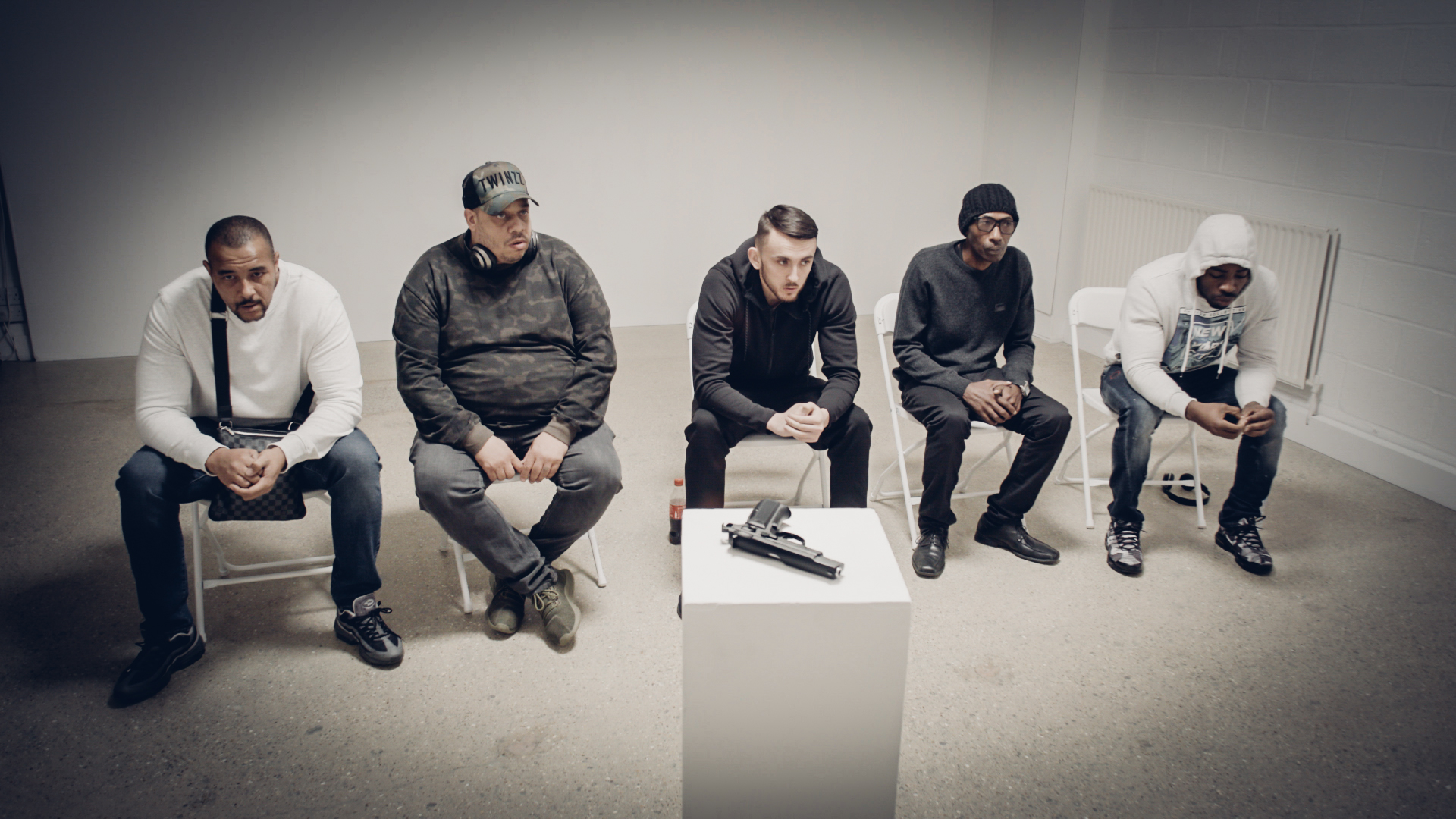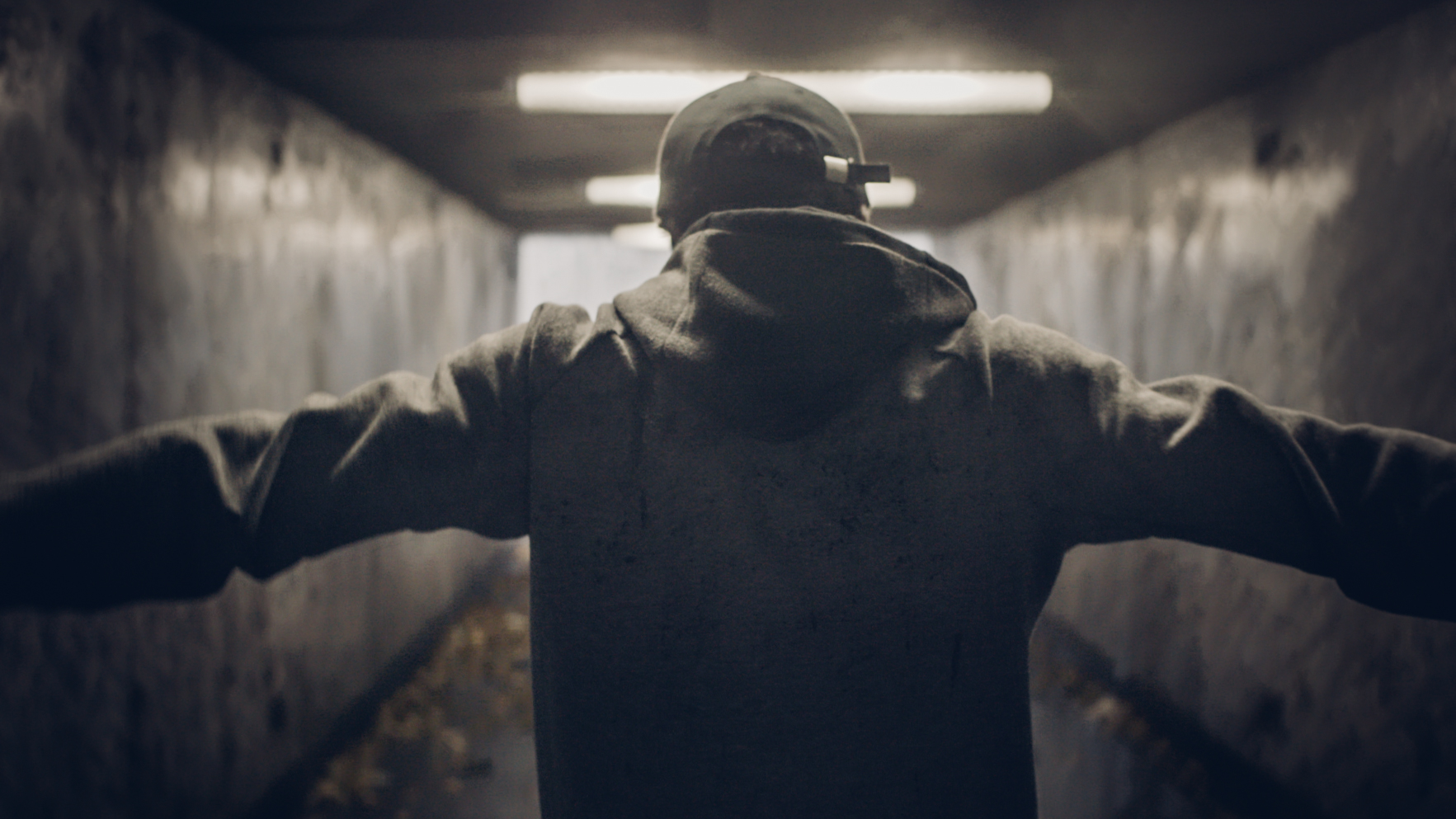The Story of the Most Wanted Gun in Britain
“I was selling heroin and crack at 13 years old on the streets of Moss Side, so bad decisions came very early for me.”
Darryl Laycock is sitting in a hotel suite in Sheffield, recounting his past. A film he is involved in, Gun No 6, has just had its world premiere at Sheffield Doc/Fest. “It was just normality,” he says of his drug dealing youth, which soon morphed into harder crime, with his time as an armed gang member.
Gun No 6 is not directly about Laycock. The film follows the story of a firearm that, during a period stretching over a decade, was involved in 11 different shootings and three murders across the West Midlands. During a spike in shootings in the early-2000s, West Midlands Police were so concerned about the repeated use of guns and the need to locate them that they made a top ten most wanted list. Gun number six was deemed the most lethal and wanted firearm in that lineup.
“There’s a weird anomaly in Britain,” the film’s producer, Zac Beattie, tells me. “It is one of the safest places for gun crime in the world, but because it’s quite hard to get hold of a reliable gun, when they are used in a serious crime they are not disposed of, but often used again or passed on.”
Handed over to fellow gang members, rented, sold or hidden, the gun’s journey in this film remains somewhat mysterious. The only thing that connects these crimes is the gun itself; none of the shootings are linked. At one point, the gun makes no appearance for four years, and it remains undiscovered today.

Gun No 6 traces the history of the gun, retelling each incident over the years. However, it does so through re-enactment, using ex criminals with gun convictions – such as Laycock – to act out the crimes where the gun was used. Heavily inspired by films such as The Act of Killing and Alan Clarke’s Elephant, the documentary uses this technique to draw out the stories of those involved and to try to unravel something weightier about gun culture in the UK.
The film’s director, James Newton, says: “When you talk to a lot of people about guns, there is a lot of bravado and a lot of surface, so doing reconstructions opened something deeper up. Sometimes you would give them a replica gun to hold and they would start shaking with fear because they hadn’t touched one for so long. It unlocked an honesty to them about the past that had been hidden away.”
Laycock’s life is one peppered with violence and crime and horrendous incidents. He claims to have lost 30 friends and family to violence; he has been shot and stabbed multiple times; and he’s spent 12 years of his life in 19 different jails. When asked in the film about what it was like to be charged with attempted murder, he replies: “It was another day at the office.” Laycock is fully reformed now, turning his back on that life in 2011.
These days, Laycock is a crime prevention consultant and mentor, working with kids who may be heading down a similar path to the one that led him astray. Through this kind of work, as well as through the sort of in-depth reflection this film allows, he has begun to realise and accept he’s spent a lot of his life suffering from PTSD. He was surrounded by crime and violence as a child, before later seeing his best friend shot dead by rival gang members. His whole life has been trauma. “Every day I think about my best mate who was killed in front of me,” he tells me.
This is the backdrop to Gun No 6. While it tells the story of this gun and the multiple shootings it was involved in – as well as giving key screen time to the families of victims who were lost when the trigger was pulled – it also explores the role and function of trauma, and what happens when young people are immersed in this world without choice. “Nobody ever told me I could do anything else or be anything else,” says Dave, joining Daryl and I via phone. “Nobody said, ‘Be different, go to university,’ or anything like that. It was expected of me to be part of this world.”
Dave became involved with armed robberies at the age of 16 – but a long stint in prison as an adult was enough for him. “I had the realisation that this is where the road ends,” he says. “I’d walked down that path and I knew how this story ends, and at that point I didn’t want to be part of that story anymore.”
For Beattie, getting the ex-convicts to unlock these previously unexplored parts of themselves and look at their lives before crime was an important factor in feeding the collective understanding of how and why so many people get drawn into gangs and violent culture from a young age.
“The film helped me understand why some people would make choices that most of us would never make,” he tells me. “If the defining things that are going on around you are making you fear for your own safety, or from a young age you’ve witnessed people who look like you experience horrific or humiliating violence, these things change your mindset and your vulnerability to making those kind of choices. A lot of the young men that we’ve encountered are suffering extraordinary – and usually doing so quietly – trauma and mental health issues that don’t feature in the ways of how gang culture is traditionally reported.”
Laycock is honest in saying that life hasn’t been easy since turning things around. When I ask him if his life is better, he responds: “I don’t know. I struggle more now. Money was easier to come by then, and I take my hat off to people who work legitimately.” Is there any niggling temptation to return to that life? “Never,” he says bluntly. “No temptation. I made a promise. If there was temptation then I would have retaliated when someone was shot at my mum’s funeral. So there’s definitely no temptation.”
“Although, I wouldn’t change it for anything,” he adds. “People might think I’m horrible for saying that, but it’s made me the person I am today, and I’ve educated over 48,000 people. I just use all the negatives and try and make a positive.”
Likewise, Dave has struggled at times, but he says it’s worth the fight: “The struggle is real, and that’s why it’s important for someone like me to not get complacent. But my worst day as a free man is better than my best day in prison.”

While the weapon at the core of Gun No 6 has not been used since 2009 – its last use during an armed robbery that ended in murder – the film still feels contemporary in its subject and the debate it brings up. Gun crime is on the up; according to the figures for 2017 from the Office for National Statistics, gun crime has risen 11 percent in the UK since 2016. So, in the opinion of those who have spent years making a film about gun crime and culture in the UK, and those who have lived the life of committing those crimes, what can be put in place to help and deter, and to counter this surge?
Dave says: “A conversation needs to happen about what young people have to do in inner cities. Not just when something violent happens, not just when something critical happens, but the day-to-day reality of what a lot of young people are facing and have to deal with. Also, a focus on ex-offenders. The re-offending rate is very high because a lot of them get stereotyped and struggle. That’s why what Darryl and I are doing is significant, in the sense that it’s almost standing up for a crowd of people that are under-represented. It’s almost like you have nothing to offer when you leave prison, and that needs to change. Some young people view going to prison as having no further chance in life – that’s not the case.”
Having worked with a lot of young people currently involved with that world, Beattie sees this as something wider than a police issue, especially given the huge level of mistrust from the affected communities towards the police. “If we as a society expect police on their own to solve this problem, then we are going to be disappointed,” he explains. “We have to start acknowledging that this is a much bigger societal issue that needs input from lots of different organisations – schools, the NHS, social workers, charities. We need to be chucking money at these places to get in early. Otherwise, the police then end up with a very difficult job, with little resources to fix a problem that is so much bigger than them.”
Laycock sees his role as being crucial in helping at the intervention and prevention stage. It’s also something he feels he owes to his best friend. “I just have to carry on his name and make sure he didn’t die in vain,” he says. “It brings a lot of stress, a lot of heartache, a lot of depression, PTSD and so on, but if I can help somebody else then it’s all worthwhile. If I see kids are gaining something from it, then that inspires me to carry on.”
This article originally appeared on VICE UK.